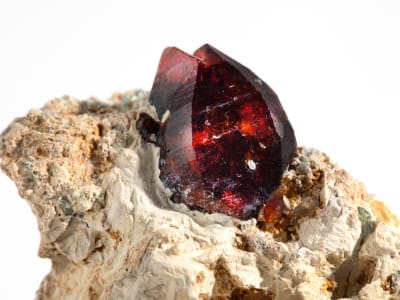A relatively new addition to the world of gems, clinohumite was first discovered in 1876 within stones erupted from Mount Vesuvius. Only recently have gem-quality pieces been found in locales including Tajikistan's Pamir Mountains. Clinohumite's coloring typically ranges from white to bright yellow to deep orange to red, but a few brown specimens have been found. Gemstones are sought after by gemstone collectors and rarely exceed 3 carats in size.
General Information
LWUV: Inert
Clinohumite Colors
-
 Brown
Brown -
 Orange
Orange -
 Orange
Orange -
 White
White -
 Yellow
Yellow
Alternate Names
Humite
Countries of Origin
Tanzania, United Republic Of; Myanmar; Afghanistan; Russian Federation; Czechia; United States of America; Madagascar; Kazakhstan; United Kingdom of Great Britain and Northern Ireland; Austria; Sweden; Pakistan; Korea (the Republic of); Unknown; China; Brazil; Slovakia; Bulgaria; France; Kyrgyzstan; Romania; Japan; Switzerland; India; Spain; Canada; Norway; Namibia; Finland; Italy; Mexico; South Africa; Zimbabwe; Antarctica; Australia; Germany; Greenland; Tajikistan; Indonesia
History
Clinohumite was found in 1876 on Mt Vesuvius outside Naples, Italy. It was named for its monoclinic crystal structure and its relationship with the mineral humite by Alfred Lewis Oliver Legrand Des Cloizeaux. Gem quality orangish yellow clinohumite was found near Lake Baikal in the Pamir Mountains of Tajikistan in the 1983. Reddish brown crystals are found from the Koksha Valley, Badakshan Province, Afghanistan. Brown to red material was found in the Taymyr region of Siberia, Russia in 2000. Gems from Mahenge, Tanzania were also reported in 2000 are also dark reddish brown.
Care
Requires gentle handling.

